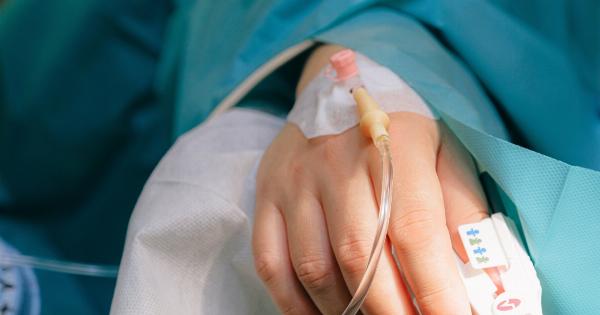Electric shock is a potentially life-threatening situation that can occur when a person comes into contact with a source of electricity. It can cause severe burns, cardiac arrest, and other serious injuries.
Knowing how to administer first aid for electric shock is crucial in minimizing the damage and potentially saving the person’s life. In this article, we will discuss the necessary steps to take when providing first aid for electric shock.
Recognizing Electric Shock
The first step in administering first aid for electric shock is to recognize the signs and symptoms of electric shock. Some common indications include:.
- Visible burns on the skin where the contact with electricity occurred
- Numbness or tingling sensation
- Difficulty breathing
- Unconsciousness or altered level of consciousness
- Cardiac arrest or irregular heartbeat
Safety First
Before providing first aid for electric shock, it is essential to ensure your own safety. Remember that contacting an electrical source can also put you at risk of electric shock. Follow these steps to ensure safety:.
- Turn off the power source: If possible, disconnect the electrical supply or switch off the circuit breaker to eliminate the source of electricity.
- Use non-conductive objects: If you cannot turn off the power supply, use a non-conductive object, such as a dry wooden stick or a rubber glove, to separate the person from the electrical source.
- Stand on dry ground: Ensure that you are standing on dry ground and not in a puddle or wet surface before attempting to help the person.
Assessing the Person
Once you have ensured your own safety, assess the person who has suffered an electric shock. Follow these steps to evaluate their condition:.
- Check for responsiveness: Gently tap the person and ask if they are alright. If there is no response, proceed to the next steps.
- Call for emergency assistance: Dial the emergency services in your country and provide them with accurate information about the situation.
- Check for breathing and pulse: Place your ear near the person’s mouth and nose to listen for breathing sounds while also checking for a pulse on their neck.
Providing Cardiopulmonary Resuscitation (CPR)
If the person is unconscious and not breathing, immediate CPR should be administered. Follow these steps:.
- Position the person on their back on a firm surface.
- Start chest compressions: Place the heel of one hand over the center of their chest, between the nipples. Place the other hand on top and interlock the fingers. Keep your arms straight and perform chest compressions by pushing down hard and fast, at a rate of around 100-120 compressions per minute, allowing for complete chest recoil after each compression.
- Provide rescue breaths: After performing 30 chest compressions, tilt the person’s head back, lift their chin, and pinch their nose. Form a seal over their mouth with yours and give two rescue breaths, each lasting about one second and causing visible chest rise.
- Continue CPR cycles: Repeat cycles of 30 chest compressions followed by two rescue breaths until help arrives or the person starts breathing.
Managing Burns
Electric shocks can cause severe burns, and it is important to manage them properly. Here’s what you should do:.
- Ensure your hands are clean and sterile before touching the burn to avoid infection.
- Remove any clothing or jewelry near the burn, if it is not stuck to the skin.
- Cool the burn: Run cool (not cold) water over the burn for at least 10 minutes to help reduce pain and prevent further tissue damage.
- Protect the burn: Cover the burn loosely with non-stick sterile dressing or a clean cloth to protect it from infection.
- Do not apply creams, ointments, or adhesive bandages to the burn.
Seeking Medical Help
After providing initial first aid for electric shock, it is crucial to seek medical help. Even if the person appears stable, they may still have internal injuries that need prompt medical attention.
Inform the medical professionals about the details of the electric shock incident and the first aid measures you have already taken.
Preventing Electric Shock
Prevention is always better than cure when it comes to electric shock. Follow these safety measures to reduce the risk of electric shock:.
- Ensure electrical appliances and cords are in good condition and without frays or exposed wires.
- Keep electrical devices away from water or damp areas.
- Turn off the power supply and unplug appliances before performing any maintenance or repairs.
- Install ground fault circuit interrupters (GFCIs) in areas with water, such as bathrooms and kitchens.
- Teach children about electrical safety and the dangers of playing with electrical outlets or appliances.
Conclusion
Electric shock is a serious medical emergency that requires immediate action. By familiarizing yourself with the necessary first aid procedures, you can potentially save lives and minimize the long-term effects of electric shock injuries.
Remember, your own safety is paramount, so make sure to prioritize it before assisting anyone in an electric shock situation.































